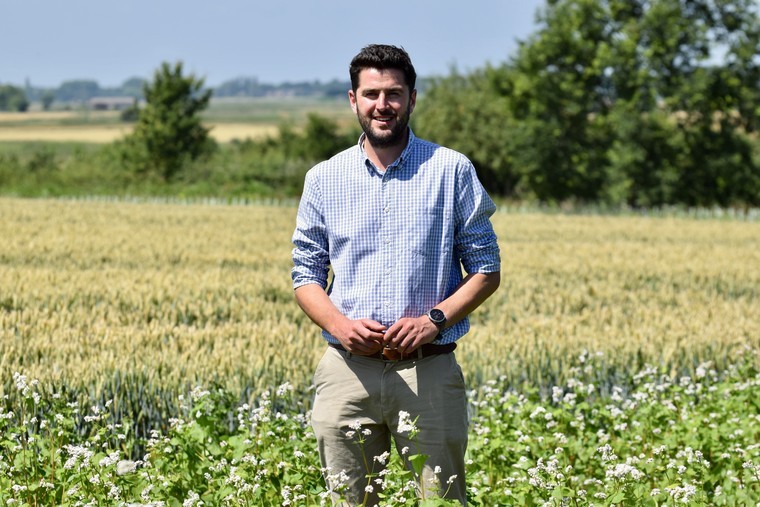As part of its Helix initiative, the firm has established a new trials site near Warboys in Cambridgeshire dedicated to testing out some of the many environmental stewardship options that will be central to future support within the Environmental Land Management Scheme (ELMS).
It will open its doors to the site in September (see box below), giving growers chance to see first-hand the many traditional and exotic species that make up different stewardship mixes, learn how to establish them successfully and discuss the benefits they deliver to biodiversity and soil health.
The event provides the perfect platform for planning the next steps within the new policy framework and help bridge the gap that may develop in farm finances once the Basic Payment Scheme (BPS) is gone.
“All farmers should be considering what they can do in terms of stewardship options now, don’t just wait until ELMS is launched in 2024,” says services leader Matt Ward. “Currently there’s a great opportunity to get two bites of the cherry by trying different stewardship options at the same time as still being able to claim some BPS.
“It is a very different world we’re looking at though, which will require growers to be more flexible about how and where they grow crops and think carefully about where stewardship options best fit into their own business.”
{in-brief}
Explore the options
Understanding what is available and seeing how various options perform in a normal farm situation allows more informed decisions to be made, says Hutchinsons environmental services specialist Matt England, who’s 180 ha (450-acre) family farm is hosting and managing the trials.
The site, which is predominantly on heavier clay-based soil, includes spring-drilled plots of 16 different species sown as straights, allowing growers to see the characteristics and growth habits of exotic species like sorghum, reed millet, camelina and quinoa, alongside more familiar names such as kale, stubble turnip and sunflower.
“Many species will be new to a lot of farmers, so it’s interesting to see their characterises and how they grow in UK conditions. We’ve been fortunate with the rain in May coming straight after drilling, which really helped plots establish, so they should look fantastic by September.”
A range of seed mixes has also been established, including the two-year legume option (with and without grass) and other flower/nectar-rich mixes, that are already attracting considerable interest among farmers in existing stewardship schemes, the ELMS pilot, and the regenerative agriculture movement.
“Weed control is one of the biggest challenges many growers face when establishing stewardship mixes, which is why we’ve included a herbicide trial of pre-ems, post-ems and a combination of both to see what works across the different species and seed mixtures,” adds Mr England.
“If you can keep these mixes weed-free, it is much better for biodiversity as it allows the flowering and seed-producing species to thrive, rather than having them outcompeted by weeds.
“Ultimately, if you’re going to be putting a percentage of your farm down to these kind of mixes now and in the future, then you’ve got to select the most appropriate options for your situation and manage them well to get the most out of them.”
The impact of stewardship mixes on soil health is another area being investigated at the Warboys site, which has been assessed before drilling to provide a baseline from which any changes can be measured. “Many stewardship and cover crop mixes can have a beneficial impact on soil health, organic matter and biodiversity, so we hope to be able to show that change over time.”




